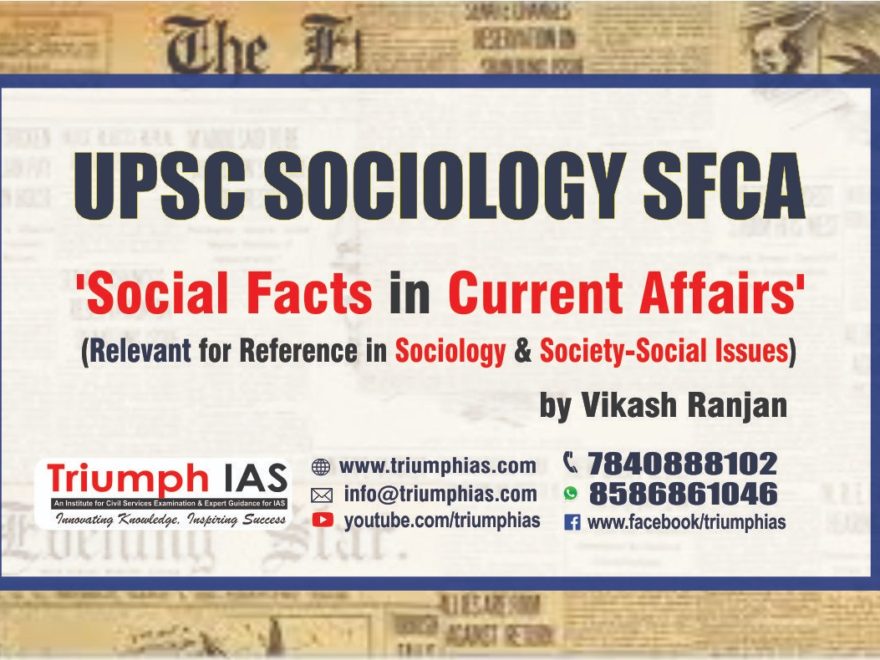- Relevant for Sociology Syllabus: Paper 1- Stratification and Mobility; PAPER-2 – Challenges of Social Transformation)
- (Relevant for GS Syllabus: Paper 1– poverty and developmental issues)
WOMEN TRAFFICKING
PERILS OF THE PANDEMIC & UPWARD SURGE IN WOMEN TRAFFICKING
- One in three girls missing globally due to sex selection, both pre and post-natal, is from India — 46 million out of the total 142 million, according to the UNFPA’s State of the World population 2020, which was released recently.
- Across the world, millions of women and girls live in the long shadows of human trafficking. Whether ensnared by force, coercion, or deception, they live in limbo, in fear, in pain. Such is the case of a minor girl who was trafficked from Boudh district of Odisha.
- She worked as an opera artiste to make a living but lost her job due to lockdown. Bhakta, who claimed to be an opera actor promised her to get her a job in his Balikuda troupe; took her to Swain’s house and they stayed there for a few days and one day Bhakta fled, leaving her alone with Swain. Then Swain when tried to rape her, she threatened to complain to the police but was shocked when she got to know that she was sold to him for 40,000 rupees.
- But without losing hope, she made up her mind and escaped the next night and reached for the villagers for help. They contacted the child helpline officials when they heard her ordeal and the girl was rescued. But the case is still going on in the court as Bhakta is still missing.
- Reports from Child Line sources suggest that about 1,034 persons have been rescued including minors in the last couple of months during the lockdown period in the southern part of the state. Triggering specific locations like Berhampur and Ganjam are the ones which have sparked the cases in this time of the pandemic.
- Poverty plays a substantial role in explicitly promoting sex commerce and in turn, promotes women trafficking, which is a factual note in the face of the society. Having been created levels of community makes the under-developed vulnerable to such crimes. Adding the levels or summing-up the coordinated differences can only bring about a more than negligible change.
- With COVID-19 forcing for a longer and persisting period of lockdown, reports have revealed a leap in trafficking cases, especially in the West Bengal region. According to the West Bengal Commission for Protection of Child Rights (WBCPR), it received about 136 complaints regarding the human trafficking of girls and women around the state between March 13 and April 13, which has worsened the situation. With post-Amphan effects still luring around, it has become a nightmare for the residents to handle the scenario.
- Claiming reports from past years also reveal the darker side of state Odisha where trafficking was and is still vigilant. According to the data by the National Crime Records Bureau(NCRB) 2013, Odisha registered in a total of 79 cases of human trafficking. Further details reveal that most of the girls trafficked were minor girls, who were abducted for child marriages in different parts of the country and even to different districts of Odisha.
- AGONIES OF THE VICTIMS, THEIR PSYCHO-SOCIAL ISSUES
- Women when going through this situation, most of them can return to a stable state after some time but minor girls are not that strong enough to pull the string up from the ground.
- Taking a case covered by an international NGO Action Aid, when the minor girl was rescued and was sent back to her home, she wasn’t allowed to re-join her family.
- She was cast aside as they said that after all that she went through, she has brought a stain to her family.
- Instead of applauding her mental strength to escape that dungeon, they rubbed her face with shame and dishonour and left her to live a life away from them. This is what the mindset the victim goes through, even after escaping hell.
- To abandon such scenarios, the Indian Penal Code has criminalized trafficking offences under Section 370 which includes physical and sexual exploitation, or slavery, and servitude.
- The government has formulated laws that restrict traffickers from such crimes and the Indian Government has also partnered with United Nations Office on Drugs and Crimes (UNODC) to strengthen anti-trafficking mechanisms in India for creating a better environment for women and girls of the nation.
- What needs to be done? Despite such forced efforts, human trafficking has not seen the face of the trough. There has been a constant effort from both the government and the NGOs to curb the crime which has been the root cause and links to other crimes.
- Mechanical proposals in the panel, written laws and schemes won’t be any good unless and until they come into enforcement with full-fledged force.
- Even if they do come into enactment, the result won’t change for the victims hoping to return to their families; as their own family would not accept her after fighting such a mental and physical war. Trafficking generates for various reasons but the traffickers have a common mindset to suppress their victim into their benefit. Only a compelling and crippled mind gives birth to such a devilish mindset to play with human life. In some places, trafficking is done on an agreement basis for some reason but no matter the reason, clutching a girl and forcing her to bind with the chains of adulthood at an age when she should explore the world around.
- By only crafting the inner soul from within can change the framework of traffickers. Drawing them behind bars with law and order is just an act of mere illusion against the real act of modification.


Kindly mention your sources.